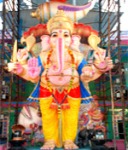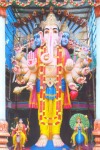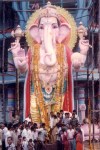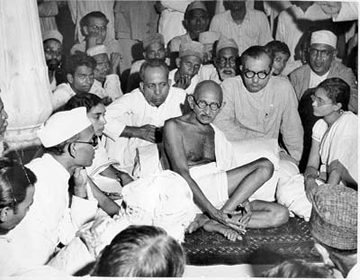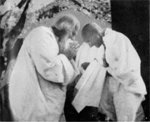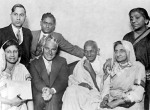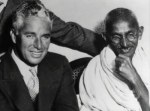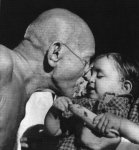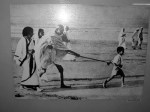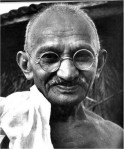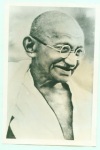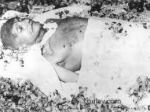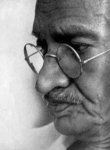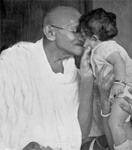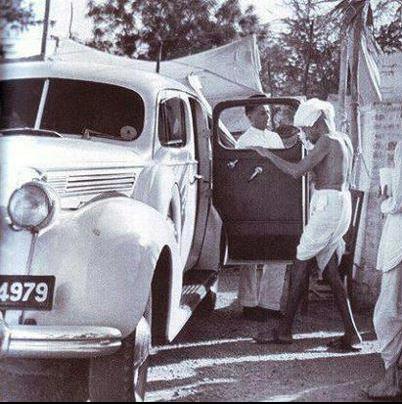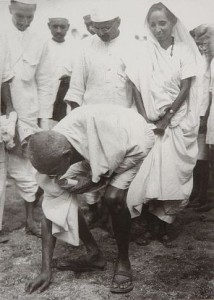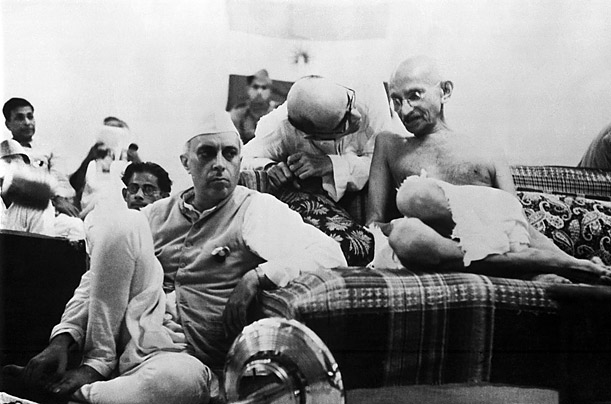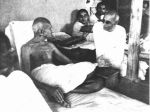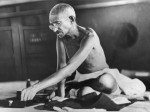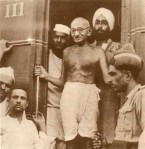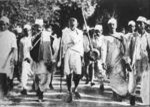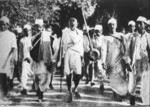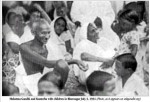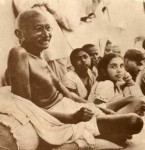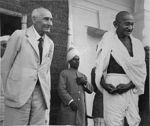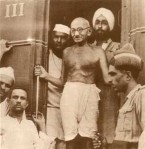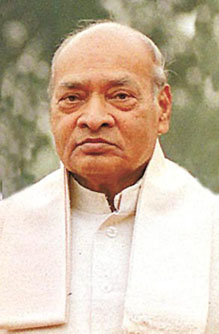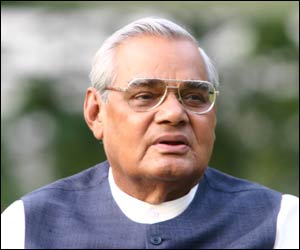
Atal Bihari Vajpayee
Every time I travel on this NH7 highway, I sincerely thank Our ex Prime Minister Mr Atal Bihari Vajpayee, who was the visionary of Golden Quadrangle Project. A True Leader with great vision, who dared to declare India as Nuclear capable Nation with his gutsy decision to conduct nuclear tests in Pokhran…! Yet… simple, noble, not power hungry, miles away from corruption, humble and down to earth Human Being…A true inspiration to many….and in ideal example for today’s so-called politicians. We miss you Sir!!.
May be one of the great Leader in Independent India after Lal Bahadur Sastri. Mr Vajpayee is respected by all sections of India, across the political parties, religions and states. People cannot even think in their wildest dreams that he can commit or a become part of any kind of corruption or scam. He lived truly upto that image and became an example to politicians of today’s and future politicians of India.
**The Golden Quadrilateral is a highway network connecting India’s four largest metropolises: Delhi, Mumbai, Chennai and Kolkata, thus forming a quadrilateral of sorts. Four other top ten metropolises: Bangalore, Pune, Ahmedabad, and Surat, are also served by the network. The largest highway project in India, initiated by Atal Bihari Vajpayee.
***Atal Bihari Vajpayee, Birth: 25 December 1924 in Gwalior) is a veteran Indian statesman who served as a non congressPrime Minister of India three times, viz. 13 days in 1996,13 months in 12th Loksabha elections and lastly a five year’s term from 19 March 1998 until 19 May 2004.
His Major Achievements during his tenure as Prime Minister of India are Nuclear Tests conducted in 1998, The Lahore summit(1998-99), National highways development project, India’s Victory in Kargil War, Foreign Policy and Economic Reforms that he introduced and many more..,
Nuclear Tests
In May 1998, India conducted five underground nuclear tests in Pokhran, Rajasthan. The five tests shocked and surprised the world, especially considering that the government had been in power for only a month. Two weeks later, Pakistan responded with its own nuclear tests, making it the newest declared nation with nuclear weapons.
While some nations, such as Russia and France, endorsed India’s right to defensive nuclear power,[12] others including the United States, Canada, Japan, Britain and the European Union imposed sanctions on information, resources and technology to India. In spite of the intense international criticism and the steady decline in foreign investment and trade, the nuclear tests were popular domestically and Vajpayee’s popularity as well as the BJP’s prestige rose in response
The Lahore Summit
In late 1998 and early 1999, Vajpayee began a push for a full-scale diplomatic peace process with Pakistan. With the historic inauguration of the Delhi-Lahore bus service in February 1999, Vajpayee initiated a new peace process aimed towards permanently resolving the Kashmir dispute and other conflicts with Pakistan. The resultant Lahore Declaration espoused a commitment to dialogue, expanded trade relations and mutual friendship and envisaged a goal of denuclearized South Asia. This eased the tension created by the 1998 nuclear tests, not only within the two nations, but also in South Asia and the rest of the world.
National Highways Development Project
Vajpayee’s pet projects were the National Highway Development Project and Pradhan Mantri Gram Sadak Yojana, two high profile and popular projects in which he took a personal interest.
The National Highways Development Project is a project to upgrade, rehabilitate and widen major highways in India to a higher standard. The project was implemented in 1998. “National Highways” account for only about 2% of the total length of roads, but carry about 40% of the total traffic across the length and breadth of the country. This project is managed by the National Highways Authority of India under the Ministry of Road, Transport and Highways. The NHAI has implemented US$ 71 billion for this project, as of 2006.
The Projects consists of Seven phases which includes the first phase of The Golden Quadrilateral project(GQ; 5,846 km) connecting the four major cities of Delhi, Mumbai, Chennai and Kolkata. This project connecting four metro cities, would be 5,846 km (3,633 mi). Total cost of the project is Rs.300 billion (US$6.8 billion), funded largely by the government’s special petroleum product tax revenues and government borrowing. In January 2012, India announced the four lane GQ highway network as complete. Phase II: North-South and East-West corridors comprising national highways connecting four extreme points of the country. The final completion date to February 28, 2009 at a cost of Rs.350 billion (US$8 billion), with funding similar to Phase I.
The Pradhan Mantri Gram Sadak Yojana or PMGSY is a nationwide plan in India to provide good all-weather road connectivity to unconnected villages. It is under the authority of the Ministry of Rural Development and was begun on 25 December 2000. The goal was to provide roads to all villages (1) with a population of 1000 persons and above by 2003, (2) with a population of 500 persons and above by 2007, (3) in hill states, tribal and desert area villages with a population of 500 persons and above by 2003, and (4) in hill states, tribal and desert area villages with a population of 250 persons and above by 2007.
Foreign Policy and Economic Reforms
During his administration, Vajpayee introduced many important economic and infrastructural reforms domestically including, encouraging the private sector and foreign investments; reducing governmental waste; encouraging research and development and privatization of some government owned corporations
In March 2000, Bill Clinton, the President of the United States, paid a state visit to India. His was the first state visit to India by a US President in the past 22 years. President Clinton’s visit to India was hailed as a significant milestone in the relations between the two countries. Since the visit followed barely two years after the Pokhran tests, and one year after the Kargil invasion and the subsequent coup in Pakistan, it was read to reflect a major shift in the post-Cold War U.S. foreign policy. the major achievement was a significant expansion in trade and economic ties. The Historic Vision Document on the future course of relations between the two countries was signed by Prime Minister Vajpayee and President Clinton during the visit.
Kargil War
militants and non-uniformed Pakistani soldiers (many with official identifications and Pakistan Army‘s custom weaponry) had infiltrated into the Kashmir Valley and captured control of border hilltops, unmanned border posts and were spreading out fast. The incursion was centered around the town of Kargil, but also included the Batalik and Akhnoor sectors and include artillery exchanges at the Siachen Glacier. Indian army units were swiftly rushed into Kashmir in response. Operation Vijay (1999), launched in June 1999, saw the Indian military fighting thousands of militants and soldiers amidst heavy artillery shelling and while facing extremely cold weather, snow and treacherous terrain at the high altitude. Over 500 Indian soldiers were killed in the three-month long Kargil War, and it is estimated around 600-4,000 Pakistani militants and soldiers died as well.
he victory in Kargil bolstered the image of Vajpayee and he was hailed across the country for his bold and strong leadership. It also, gave a tremendous boost to the morale of the Indian public and bolstered National pride. On 26 July 2012, marked as the `Kargil Vijay Diwas’.
Indian Airlines hijack
A national crisis emerged in December 1999, when Indian Airlines flight (IC 814) en-route Kathmandu to New Delhi was hijacked by five terrorists and flown to Taliban-ruled Afghanistan. The hijackers made several demands including the release of certain terrorists like Maulana Masood Azhar from prison. Under extreme public pressure for the safe release of the hostages, the government ultimately caved in and Jaswant Singh, the then Indian External Affairs minister, flew with the terrorists to Afghanistan and exchanged them for the passengers.
2001 Attack On Parliament
On 13 December 2001, a group of masked, armed men with fake IDs stormed the Parliament building in Delhi. The terrorists managed to kill several security guards, but the building was sealed off swiftly and security forces cornered and killed the men, who were later proven to be Pakistan nationals. Coming just three months after the September 11 attacks upon the United States, this fresh escalation instantly enraged the nation. Although the Government of Pakistan officially condemned the attack, Indian intelligence reports pointed to a conspiracy rooted in Pakistan. Prime Minister Vajpayee ordered a mobilization of India’s military forces, and as many as 500,000 servicemen amassed along the international boundary bordering Punjab, Rajasthan, Gujarat andKashmir. Pakistan responded with the same. Vicious terrorist attacks and an aggressive anti-terrorist campaign froze day-to-day life in Kashmir, and foreigners flocked out of both India and Pakistan, fearing a possible war and nuclear exchange. For as long as two years, both nations remained perilously close to a terrible war.
Personal Details
Atal Bihari Vajpayee was born to Krishna Devi and Krishna Bihari Vajpayee on 25th December, 1924 in a respected middle class Brahmin family. His birthplace was Shinde Ki Chhavani, a small town in Gwalior district of Madhya Pradesh. Vajpayee attended Gwalior’s Victoria College (now Laxmi Bai College), and graduated with distinctions inHindi, English and Sanskrit. He completed his Post Graduation with an (M.A.) degree in Political Science from DAV College, Kanpur,
Vajpayee was elected to the Lok Sabha a record nine times, and twice to the Rajya Sabha. and served as the Prime Minister of India from 1996 to 2004 in three non-consecutive term. [Courtesy : Wekipedia]










